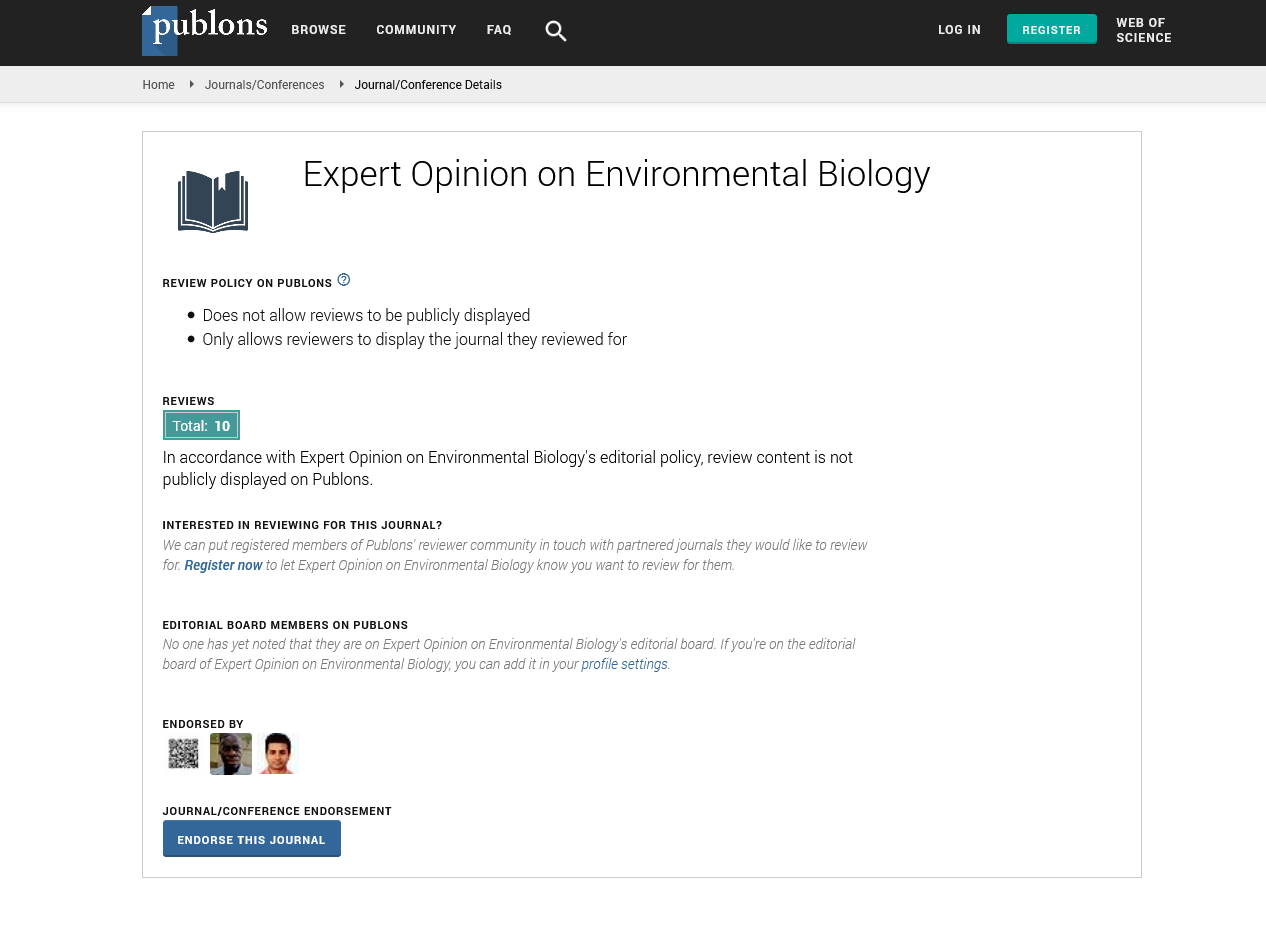Examine the interconnected nature of the man-made environmental problems in a global prospective
Sivakumaran Sivaramanan and Sarath Kotagama
Central Environmental Authority, Battaramulla, Sri Lanka
University of Colombo, Sri Lanka
: Expert Opin Environ Biol
Abstract
In recent Katowice Climate Change Conference COPE 24 the United Nations secretary general António Guterres urged governments to finalize the implementation guidelines of Paris climate change agreement. Climate change is a global environmental problem with complicated outcomes. Manmade climate change is believed to be caused primarily as a result of deforestation, draining of wetlands, intensive farming and air pollution (greenhouse gas emission). Each of these problem such as air pollution is caused by intensive farming, burning of fossil fuels (due to global energy crisis), urbanization, methane emission from solid waste dumps, etc. Furthermore, the deforestation is mainly caused by increasing human population, poverty, over exploitation of natural resources, urbanization, mining minerals, intensive farming, establishment of dams, wild fires during El Nino, acid rain and global warming (cyclic as cause and effect). Furthermore, each of these manmade environmental problem such as air pollution and deforestation may cause various other environmental problems. For instance, air pollution causes ocean acidification, ozone depletion, acid rain, disease, visual pollution (smog), etc. Similarly, deforestation causes issues such as biodiversity loss, land degradation, human animal conflict, etc. Thus, it is clear that all major manmade environmental problems are interconnected (as cause and effect), and the sustainable solutions often consider breaking of key links (mitigation through eliminating the primary causes) of the problems such as, in order to mitigate eutrophication, it is possible to find temporary solution via application of coagulant chemicals, and sustainable solutions are banning agrochemicals and intensive farming techniques (removing source problems/ links). In reality, however, human adaptability factors (economic, social, behavioral, health and political) act as the barriers for finding sustainable solution in this way. Thus, application of regenerative solutions such as floating wetlands, act as a shortcut and facilitate achieving permanent solution to the problem by overcoming human adaptability factors without altering the source problem (link). Thus, regenerative solutions (shortcuts) are to be created when sustainable solutions (removing links or mitigating causative problems) are not feasible. This phenomenon also prevents crisis of human adaptability factors such as ‘yellow vest’ movement in the future. • About 204 links (as cause and effect) between 40 manmade environmental problems (funneled based on severity) are proved with the real world examples from scientific literature (not given here). • Fig. 1 depicts the world’s first mental map on interconnections between manmade environmental problems based on cause and effect relationship.
Biography
Sivakumaran Sivaramanan has been working as an Environmental Officer at Central Environmental Authority, Battaramulla, Sri Lanka since 2014, he has completed his BSc (Hons.) in Natural Science at The Open University of Sri Lanka, Post Graduate diploma in Environmental Management at Faculty of Graduate Studies, University of Colombo, MSc in Experimental Biotechnology at PGIS, University of Peradeniya and currently reading his PhD at Faculty of Graduate Studies, University of Colombo. He authored several peer reviewed publications, participated in several international symposiums and he also published several e-books through Amazon.com (www.envo.yolasite.com).
E-mail: sivaramanansr@hotmail.com
 Spanish
Spanish  Chinese
Chinese  Russian
Russian  German
German  French
French  Japanese
Japanese  Portuguese
Portuguese  Hindi
Hindi 
